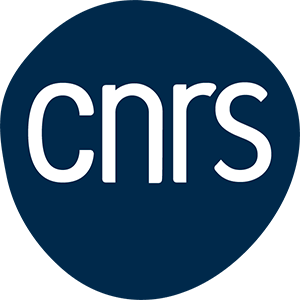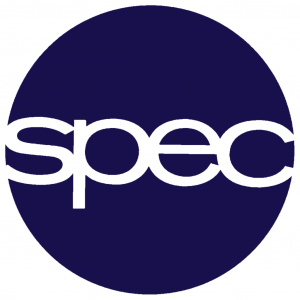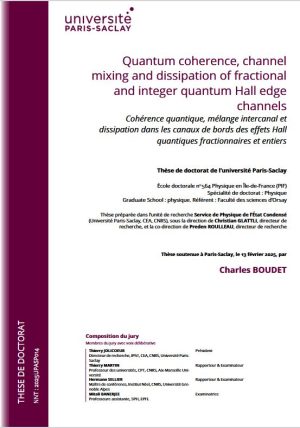Abstract:
This thesis focuses on the study of quantum decoherence, inter-channel tunneling, and dissipation in the integer and fractional quantum Hall states, using the platform of two-dimensional gases—notably formed at the interface of the n-doped GaAs/AlGaAs heterostructure used here. Quantum decoherence refers to the loss of quantum behavior of a studied system, which can be induced by coupling to the external environment. Quantum computing relies on the principle of quantum coherence, and understanding the mechanisms leading to decoherence would enhance our grasp of quantum computing theory, and quantum mechanics in general. During this thesis, the initial focus was on understanding the mechanisms by which decoherence occurs in two different situations : in the integer quantum Hall
effect and in the fractional quantum Hall effect (2/3). Then, in the final part, the research was dedicated to the fabrication of a single-electron detector, the last missing link in the chain needed to perform operations with flying electronic qubits — qubits not defined by a two-level energy system, but by a system with two spatial positions.
Firstly, in the case of the integer quantum Hall effect, the edge channels all propagate in the same direction, determined in this case by the direction of the magnetic field applied perpendicularly to the sample, and can have opposite spins, which does not favor inter-channel tunneling. However, the n-doped GaAs/AlGaAs heterostructure, due to symmetry breaking in the direction perpendicular to the 2D gas, possesses spin-orbit coupling via the Bychkov-Rashba effect. Thus, the spin can be flipped, which is conducive to elastic inter-channel tunneling. Furthermore, the presence of gates in the middle of the sample, such as the quantum point contact—which is associated with an electric field locally depleting the 2D gas beneath its surface—causes a sudden change in direction for the electrons, potentially leading to tunneling at the point of spatial curvature change. The presence of tunneling is then highlighted here by modeling the partition noise produced by a tunneling point and its measurement.
Secondly, in the case of the fractional quantum Hall effect at 2/3, the edge channels are counter-propagating, favoring inter-channel tunneling, which occurs frequently, inelastically, and randomly. A very simple model of this effect can be reproduced by introducing “black boxes”, the Landauer reservoirs—or equivalently, energy-preserving reservoirs—where inelastic tunneling is allowed within. The model converges to the historical KFP model when enough reservoirs are introduced. When a quantum point contact is introduced, a conductance plateau at 0.5e^2/his predicted and measured during the experiments conducted in this thesis. Additionally, the presence of dissipation is shown and validated. However, Hong-Ou-Mandel type interferometry experiments reveal a non-zero visibility, indicating that the dissipation mechanism does not cause a total loss of coherence.
Finally, in addition to the previous experiments, a single-electron detector was conceived to preserve quantum coherence when measuring a flying qubit, allowing it to be reused for subsequent operations, thus paving the way for quantum computing in two-dimensional electron gases under the quantum Hall effect regime. While the detector has been realized and can detect up to several hundred electrons, the technical optimizations needed to detect a single electron could not be completed before the end of the allotted time for this thesis.
Keywords: Electron quantum optics, Mesoscopic transport, Quantum Hall effect, Flying qubit, Quantum coherence, Shot noise.
Cohérence quantique, mélange intercanal et dissipation dans les canaux de bords des effets Hall quantiques fractionnaires et entiers
Résumé :
Cette thèse porte sur l’étude de la décoherence quantique, du tunneling intercanal et de la dissipation dans les états entiers et fractionnaires de l’effet Hall quantique, en utilisant la plateforme des gaz bidimensionnels à deux dimensions — qui se forme notamment à l’interface de l’hétérostructure dopée n GaAs/AlGaAs, utilisée ici. La décohérence quantique traduit la perte du comportement quantique d’un système étudié, ce qui peut notamment être induit par couplage à l’environnement extérieur. L’informatique quantique repose sur le principe de cohérence quantique, et la compréhension des mécanismes donnant lieu à la décohérence permettrait de mieux saisir la théorie de l’informatique quantique, voire la mécanique quantique de manière générale. Lors de cette thèse, il a été question dans un premier temps de comprendre par quels mécanismes la décoherence a lieu, dans deux situations différentes : dans l’effet Hall quantique entier et dans l’effet Hall quantique fractionnaire (2/3). Puis, dans un dernier temps, la recherche a été dévouée à la fabrication d’un détecteur à électron unique, le dernier maillon de la chaîne manquant pour pouvoir réaliser des opérations avec les qubits volants électroniques — des qubits non pas définis par un système à deux niveaux d’énergie, mais par un système à deux positions spatiales.
Premièrement, dans le cas de l’effet Hall quantique entier, les canaux de bords se propagent tous dans la même direction, fixée dans le cas présent par le sens du champ magnétique appliqué perpendiculairement à l’échantillon, et peuvent être de spin opposés, ce qui ne favorise pas le tunneling intercanal. Cependant, l’hétérostructure dopée n GaAs/AlGaAs, par brisure de symétrie dans la direction perpendiculaire au gaz 2D, possède un couplage spin-orbite par effet Bychkov-Rashba. Ainsi, le spin peut être renversé ce qui est propice au tunneling intercanal élastique. Par ailleurs, la présence de grilles au milieu de l’échantillon, comme le point de contact quantique — qui est associé à un champ électrique déplétant localement le gaz 2D sous sa surface — provoque un soudain changement de direction chez les électrons, et peut donc ainsi provoquer du tunneling au point de changement de courbure spatiale. La présence de tunneling est alors ici mise en évidence par une modélisation du bruit de partitionnement produit par un point de tunneling, et sa mesure.
Deuxièmement, dans le cas de l’effet Hall quantique fractionnaire à 2/3, les canaux de bords sont contre-propageants, favorisant le tunneling intercanal, qui se produit alors de manière fréquente, inélastique et aléatoire. Un modèle très simple de cet effet peut être reproduit en introduisant des “boîtes noires”, les réservoirs de Landauer — ou de manière équivalente, des réservoirs à conservation d’énergie — où le tunneling inélastique est autorisé en son sein. Le modèle converge vers le modèle historique de KFP lorsque suffisamment de réservoirs sont introduits. Et lorsqu’un point de contact quantique est introduit, un plateau de conductance à 0.5e²/h est prédit, et mesuré lors des expériences effectuées lors de cette thèse. Par ailleurs, la présence de dissipation est montrée et validée. Mais des expériences d’interférométrie de type Hong-Ou-Mandel révèlent une visibilité non nulle, le mécanisme de dissipation ne provoque pas de perte de cohérence quasi-totale.
Finalement, en plus des expériences précédentes, il a été pensé un détecteur à électron unique préservant la cohérence quantique lors de la mesure d’un qubit volant; permettant à celui-ci d’être réutilisé pour des opérations ultérieures, ouvrant ainsi la voie à l’informatique quantique dans les gaz bidimensionnels d’électrons sous le régime d’effet Hall quantique. Si le détecteur a été réalisé, et peut détecter jusqu’à plusieurs centaines d’électrons, les optimisations techniques lui permettant de détecter l’électron unique n’ont pas pu être terminées avant la fin du temps imparti pour cette thèse.
Mots-clés : Optique quantique électronique, Transport mésoscopique, Effet Hall quantique, Qubit volant, Cohérence quantique, Bruit de grenaille.




